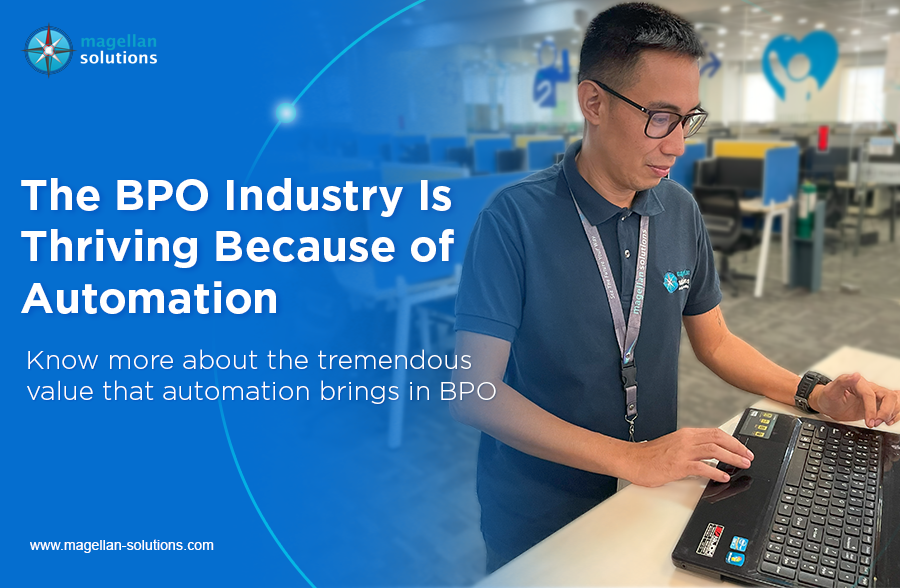Schedule a FREE call with our outsourcing expert now and get a precise quotation that meets your requirements. Don't wait - get started today!
Due to the exponential rise of information technology (I.T.) over the past ten years, it is necessary to offer I.T. goods and services using ever-cheaper methods.
Due to the numerous advantages outsourcing offers, including reduced costs and access to a larger talent pool, many companies are outsourcing their software development needs to outsourcing companies. But as perfect as outsourcing sounds, it still poses risks, which is inevitable.
But it doesn’t mean they don’t frequently face the risk of failing in that regard. Before employing an offshore staff, you must be ready to handle any risks or challenges.
In this article, we’ll examine seven significant outsourcing failures, review the top ten causes, and discuss how to prevent them.
7 Examples of Outsourcing Failures: Real-life Events
It is also inevitable that outsourcing will fail in some aspects of our lives. Let’s examine a few significant examples of bad outsourcing to see what we can learn from them.
When examining ten examples of bad outsourcing and how to avoid them, it’s crucial to consider various aspects of business practice. Common pitfalls in outsourcing include poor customer services, inadequate human resources management, and disruptions in the supply chain. These issues often arise when the outsourcing provider fails to deliver high-quality work. To avoid such problems, businesses should thoroughly vet potential partners and ensure they have a strong track record. Implementing stringent quality control measures and maintaining open communication can help ensure that outsourced tasks meet the required standards and support overall business goals effectively.
1. IBM & The State of Texas
In an expensive incident, IBM was removed from a project with the State of Texas.
Case Study
In 2006, the State of Texas employed IBM to combine the activities of 27 state agencies’ data centers into two data centers. The contract was $863 million and seven years long.
However, after four years, IBM had only finished 12% of the tasks. These outsourcing failures led to backlogs and higher costs, not to the state saving money on integrating the I.T. system.
Take Note:
- Choose the ideal contract structure for the operation. For short-term contracts, you can opt for a set fee model, and for long-term collaborations, for a material and time model.
- Make a formal agreement detailing the project’s deliverables’ scope and due dates.
2. Queensland & IBM
The event involving IBM and the Queensland Health Department highlights examples of lousy outsourcing.
Case Study
The Queensland government hired IBM in December 2007 to create a payroll system for the Queensland Health Department. Although technical difficulties were discovered throughout development, IBM revised the expenses to around $27 million. Later, the project had delays and grew to cost $1.2 billion.
Moreover, the payroll system never performed flawlessly, resulting in thousands of employees receiving incorrect paychecks. The Queensland Government attempted to sue IBM. However, a waiver absolving IBM of any responsibility dismissed the claim.
Take Note:
- Ensure developers have access to realistic deadlines.
- Instead of depending just on the outsourced team’s brand value, evaluate their skills.
- Consider project hazards and budget projections in advance.
3. J.P. MORGAN Abandons IBM
Although the Queensland project was IBM’s worst failure as an outsourcing vendor, it wasn’t the first time the company had lost a significant outsourced client.
Case Study
In 2004, J.P. Morgan Chase & Co. decided to bring its own I.T. staff back in-house and canceled the remaining seven years of its $5 billion I.T. contract with IBM. Following the takeover of Bank One Corp. in 2004, the bank decided to dissolve the agreement.
J.P. Morgan claimed that after merging with Bank One, it could manage its I.T. infrastructure more effectively domestically than through outsourcing.
IBM lost billions of dollars, and J.P. Morgan paid a price for the company’s choice to disassemble and reconstruct its I.T. team, even though J.P. Morgan did not accuse IBM of breaching its contractual responsibilities.
J.P. Morgan saw excess spending on its I.T. employee’s expenditure and compensation.
Take Note:
- Check your expenses first to see if the service you availed is worth it and if it increases your business’ efficiency.
4. Virgin Australia & Navitaire
Due to Navitaire’s negligence, an airline e-commerce outsourcing business, the reservation and distribution system for Virgin Australia crashed. The disaster highlights the need for technical proficiency in I.T. outsourcing.
Case Study
Virgin Australia’s online reservation, check-in, and booking system broke in September 2010, leaving 50,000 customers stranded.
Navitaire immediately located the issue’s root cause—a broken disk drive. However, it was unable to address the pressing problems quickly.
Navitaire decided to repair the damaged drive rather than immediately moving to a backup drive, which resulted in a 24-hour suspension of operations. Virgin Australia suffered significant financial and client losses due to the error. To deal with the losses, both corporations ultimately came to a mutually satisfactory but vague settlement.
Take Note:
- When choosing a vendor, take into account logistics and time zone issues.
- Keep your development teams on board to find solutions alongside outside specialists.
- Ensure I.T. outsourcing providers are capable of and skilled at troubleshooting problems.
5. The Royal Bank of Scotland & Their IT Vendor
The Royal Bank of Scotland (RBS) was hit with substantial fines due to its technical difficulties when working with an unidentified I.T. provider. Although not entirely an outsourcing failure, this example demonstrates how provider cooperation and skill are crucial for corporate success.
Case Study
An erroneous software update in 2012 impacted RBS’s banking system and payment processing. The update rendered the system unusable for weeks, preventing millions of consumers from accessing their accounts.
Banking companies in the giant RBS Group were among those impacted. Additionally, just about 30,000 social welfare beneficiaries got their money.
Union officials theorized that India’s outsourcing of I.T. services was to blame for the problem. However, it was later discovered that RBS technical personnel had botched the update. 2014, the Financial Conduct Authority (FCA) issued the banks a £42 million fine.
Take Note:
- Establish a precise process for emergency actions to be taken during system breakdowns.
- Conduct risk analyses to identify weaknesses in online systems, such as using old software or hardware.
- Employ an outsourced service provider with the skills and motivation to complete or assist you with crucial tasks, such as system updates and data recovery.
6. Accenture & Hertz
Accenture’s outsourcing agreement with Hertz is a clear example of the need for improved communication and project management in outsourcing.
Case Study
To modernize its website and mobile apps, Hertz recruited Accenture in 2016.
Hertz had created business plans, outlined objectives, and created roadmaps to expand its platform offerings. Accenture, however, disregarded the scalability needs of the platforms and produced a product that was inapplicable outside of North America. Other problems with the project were delays, insecure data, and sluggish design.
Hertz ultimately ended up with a mediocre product. In April 2019, they consequently sued Accenture for $32 million.
Take Note:
- Explicitly state what you expect from the contracted project.
- Throughout the process, keep in touch with the outsourced team.
- Formalize the assertions made by outsourcing suppliers.
7. Lack of Communication Between the US Navy and Electronic Data Systems (EDS)
Outsourcing failures may occasionally result from a complete breakdown in communications. This was the situation between the U.S. Navy and I.T. contractor EDS.
Case Study
The Navy and Marine Corps hired EDS in 2000 to train their employees.
EDS was so focused on getting the contract that it overlooked the true extent of the project. EDS didn’t learn that the Navy and Marine Corps wanted it to replace or integrate tens of thousands of legacy applications until it had begun working on the project.
The Navy acknowledged that its personnel’s lack of decision-making contributed to EDS’s lack of direction while also taking some blame.
Even worse, under its contract with the Navy, EDS had to pay for all the hardware changes. Due to vague contract language, EDS was exposed to expensive and unanticipated responsibilities.
Due to its inability to pay its debts, EDS had paid off more than $500 million in lost assets by 2004. At the end of the third quarter of 2004, EDS reported a $153 million loss.
TAKE NOTE:
- Check the contract to see if the implications are clear and understood by both parties.
- If you want your business to prosper, effective communication is a must.
10 Reasons Why Outsourcing Fails and How to Avoid Them
So, after discussing examples of bad outsourcing, let’s explore why outsourcing fails and how we can prevent it.
1. Lack of Control
This lack of control may impact your products and services’ performance and quality requirements. Additionally, it limits your ability to modify your outsourcing plan to suit your demands better.
Solution
You can optimize the operations of your outsourcing project by retaining some control over the outsourcing team by approving priorities and establishing rules. Additionally, it will assist you in meeting the needs, resolving the outsourcing teams’ problems, and avoiding bottlenecks.
2. Lack of Communication
Two factors contributing to outsourcing failures from companies that use these services are poor communication and dishonesty. The former results from delegating all tasks and duties to contractors without providing them with the necessary information. As a result, many providers cannot meet these companies’ expectations.
Solution
To ensure that communication is a crucial part of the process, incorporate calls and project management tools into your project plan. Clients can establish communication channels for various purposes, including team building and software development.
3. Lack of Knowledge and Expertise
Employing an outsourcing provider without the required experience and skills can waste time and resources on pointless procedures.
Solution
You can save money by hiring an outsourcing partner based on their technical capabilities rather than employing in-house development teams. They can assist you in creating performance benchmarks or metrics to assess the outsourcing company’s work caliber.
4. Vague Expectations
Unclear expectations can lead to poor outsourcing results and high prices. When coupled with inadequate risk assessments, they can result in serious company failures.
Solution
Companies should have a specific objective and lay out their product expectations for outsourcing vendors. This ensures that you and your partner agree regarding costs and product development.
Additionally, it is crucial to conduct risk analyses for initiatives before launching them. Businesses can protect themselves from product problems and vendor failures by doing this.
5. Cost Prioritization
When selecting an outsourcing partner, it can be tempting to go with the bidder that will save the project the most money. However, putting costs first doesn’t guarantee that your outsourced project will be profitable in the long run.
Solution
Cost reduction does provide you with a competitive advantage, but the value is essential because it affects how well your product is made. Therefore, outsourcing efforts should not be seen as a strategy to save operating costs. It should be viewed as a way to streamline your business’s processes.
6. Conflicts of Interest
When you outsource, you must deal with businesses that have various cultures, working methods, etc. The relationships between firms and outsourcing vendors will suffer if they have conflicting interests.
Solution
Try to have a constructive conversation and give the other party a chance to express his ideas satisfactorily. Try to acknowledge one another when you both agree on anything. This is a chance to discuss the issue and work together to find a solution.
7. Vague or No Written Contract
A formal, written contract is always in your best interest when dealing with offshore teams. According to statistics on outsourcing failures, vague or unwritten agreements are one of the main reasons for outsourcing failures. For this reason, it is essential to draft a formal agreement that outlines the obligations of the offshore service provider.
Solution
The agreement should include all the information about the project and its plans. By doing this, you can avoid becoming confused. Planning a refund policy as an exit strategy will protect you if your outsourcing team can object to or produce a mediocre product.
8. Cultural Differences
Working with offshore staff always carries the risk of encountering cultural differences. It is crucial to develop mutual respect and understanding when dealing with this issue because they have their own working cultures, like your company.
Solution
This could entail staff training and a designated period for the internal and external teams to get to know one another and establish efficient communication mechanisms.
9. Tight deadlines
Too tight deadlines may result in hurried and unsatisfactory production. Additionally, they can entail neglecting specific crucial procedures and producing substandard products.
Solution
Realistic deadlines and efficient scheduling can influence excellent project management and outsourcing outcomes. Therefore, it is a good idea for companies to use an outsourcing partner to set aside some time for project concerns.
10. Not Considering the Project as a Partnership
Businesses regard outsourcing as a temporary partnership when they see it as a transactional agreement. Due to the minimal contributions made by both sides, there is no chance of establishing confidence in the outsourcing project.
Solution
A service provider needs to act as an advantageous outsourcing partner who promotes long-term success. The likelihood of preserving shared accountability and a deeper professional relationship throughout the project lifespan is also increased by considering the venture as a partnership.
Conclusion
Businesses must also be aware of outsourcing failures to avoid them. Outsourcing won’t be a terrible idea if you thoroughly analyze and manage it well; it will help your business expand more efficiently.
The aforementioned lousy outsourcing examples should be identified and discussed before any outsourcing project to avoid potential complications during software development.
Whatever issues shouldn’t be severe enough to qualify as outsourcing failures if the risk factors are avoided?
Magellan Solutions Can Provide You with Quality Outsourcing Services and Seamless Transaction
It’s time to choose and utilize outsourcing services to increase the efficiency of your business.
With no compromise on quality and at a fraction of the price, Magellan Solutions will help you with your company needs and goals.
With 18 years of expertise in the field, we take great pride in offering only the best call center services. On top of that, we are an ISO-certified and HIPAA-compliant outsourcing company. We provide a great variety of top-notch outsourced business solutions.
Contact us now, and let’s discuss your business needs.
















